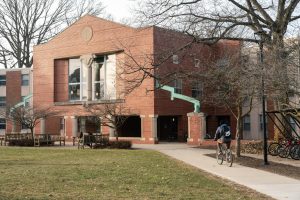University of Chicago Balances Free Speech, Trigger Warnings
September 16, 2016
As the training ground for students on the brink of entering full adulthood, the values of higher education are often the subject of scrutiny and controversy. One such controversy was prompted by a University of Chicago welcome letter sent to the university’s incoming first-years on Aug. 24 this year. The letter stated that the school does not sanction safe spaces or trigger warnings and will not stand for the intellectual losses that can come with both.
Colleges and universities are institutions of learning, discovery and growth. To achieve those three goals, institutions cannot shield their students from opinions and ideas contrary to their own. In the letter, the university demonstrated a theoretically strong and admirable position. In reality, however, that position is not strictly enforced on the school’s campus, which is ultimately for the best of its students.
A safe space is an area where members of a certain marginalized group can temporarily step away from widespread climates of discrimination and entitlement. In recent years, these spaces have gained traction at American universities and have become very controversial along the way.
The common argument against safe spaces is that they detract from scholarly freedom if certain views and ideas are left unexpressed in favor of maintaining students’ comfort. This argument is valid; in order to learn, students must be exposed to opinions contrary to their own. An environment of completely like-minded people is not one prepared to achieve progress, although it will certainly be one populated by extremely comfortable people. Such an environment is one the University of Chicago hopes to avoid, and its welcome letter gets this point across very effectively.
This is not to say safe spaces and trigger warnings shouldn’t exist at all. Probably the most common use of both does not interfere with intellectual growth, and instead prevents people from unnecessarily being put in situations that may provoke traumatic memories or cause similar issues. Such an example would be a professor alerting a class that a reading contains direct reference to sexual assault, giving any victims of such assault in the class the chance to avoid or mentally prepare themselves for that reading if they so desire.
Generally, such warnings are not harmful to intellectual growth. In fact, despite the university’s letter, many professors at University of Chicago often use them in their classes. The university actually has its fair share of safe spaces, and according to Sophie Downes, a UChicago student featured in The New York Times, Dean John Ellison, who penned the welcome letter, is formally considered a “safe-space ally” by the school’s LGBTQ Student Life Office.
This reveals an important contrast between the message UChicago outwardly sends and its true practices. Despite the hypocrisy, the university appears to strike an effective balance between the two sides of the issue, as intellectual freedom is generally protected, but those who desire trigger warnings can in most — or ideally all — cases be accommodated. Some with ties to the university believe the letter and firm stance are simply posturing to maintain the favor of donors and alumni, and that the realities on campus reflect the actual opinions of faculty.
While many students would likely appreciate the public support of the university, the proper execution of trigger warnings on the individual level is what truly matters. Surprisingly, UChicago’s awkward approach could potentially be a very effective solution to the issue, perhaps fitting for a matter of such controversy and nuance.

























